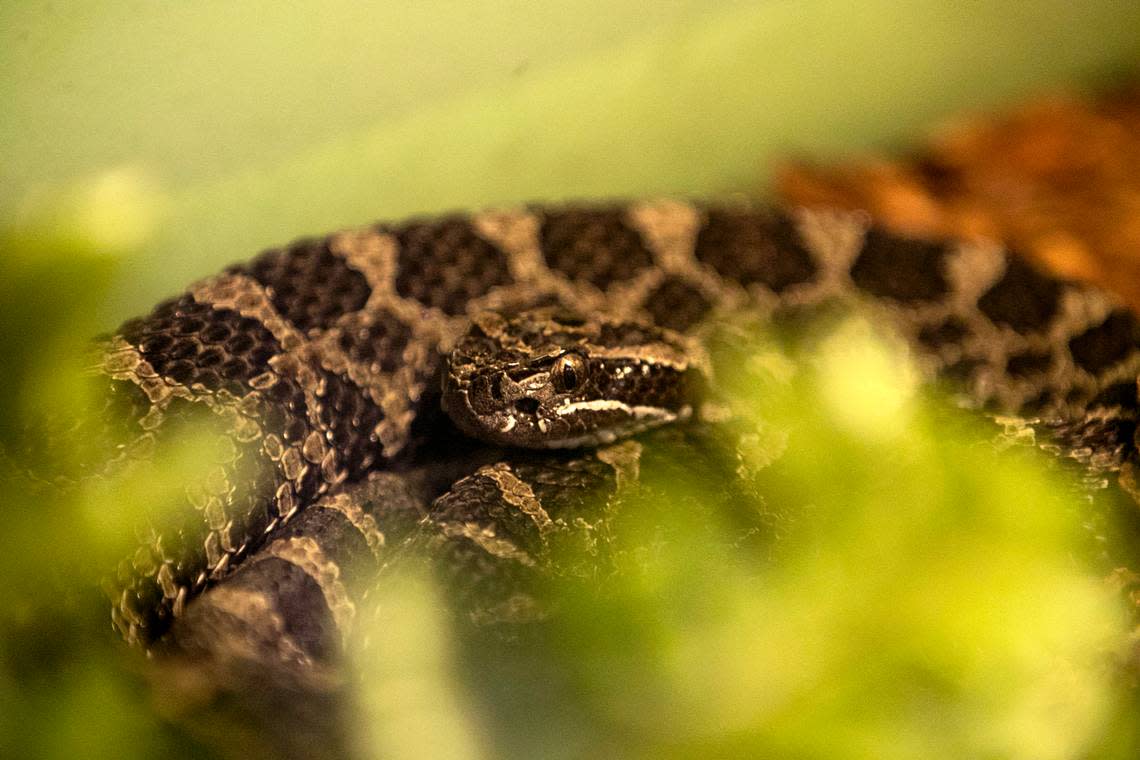Snakes might start slithering in your PA yard as summer arrives. How to keep them away

As temperatures heat up and summer arrives in full swing, snakes across Pennsylvania are waking up and getting out of their habitats, too.
Generally, snakes emerge from low-energy winter states in the early spring and remain active through October, when the hotter temperatures they need for external warmth die down. It’s not uncommon in Pennsylvania to run into some of the commonwealth’s native snake species, including a few that are endangered or venomous.
When encountering snakes in your yard, on the trails or elsewhere outside, there are some steps you can take to keep them at bay and lower the risks of a rare bite. Here’s what you need to know about Pennsylvania’s snakes and their activity.
Do rare or dangerous snakes live in Pennsylvania?
While the Keystone State lacks the exotic ecological diversity you might find in a jungle or forest, nearly two dozen snake species call Pennsylvania home. According to state law, the following three native snakes are considered endangered: the eastern massasauga rattlesnake, Kirtland’s snake and the northern rough greensnake.
Additionally, three native snakes are venomous, meaning they bite and inject toxins into prey or those who threaten them. Be sure not to confuse venomous with poisonous, as the latter describes only toxicity that comes through touch or direct contact (such as ingestion).
One of them is the brown-colored eastern massasauga rattlesnake (Sistrurus catenatus), which spends summers in upland forests but moves into wetlands in the spring, fall and winter, according to Penn State Extension. These snakes are primarily found in western Pennsylvania and have seen their populations threatened by habitat loss.
The eastern copperhead (Agkistrodon contortrix) is also venomous and is primarily found in more southern aquatic environments, according to the Pennsylvania Fish and Boat Commission, though it is not indigenous to the commonwealth. These snakes feature copper or hazel-brown colors and generally grow between 24 and 36 inches long.
The timber rattlesnake (Crotalus horridus) is the largest of Pennsylvania’s venomous snakes, with adults usually topping out between 36 and 54 inches long. They may be black or, less commonly, yellow-colored and prefer to live in deciduous forests and rocky outcrops, where they live as non-aggressive creatures that are “prone to lie quietly or crawl away to safety if given the chance,” the commission writes.
Brave and curious minds can identify the commonwealth’s venomous snakes by taking a good look at their pupils. According to the commission, non-venomous snakes common to Pennsylvania should have rounded pupils, while venomous snakes should have vertically elliptical pupils similar to those of a cat.
Most of Pennsylvania’s other snakes are far more common than these venomous or endangered varieties. You might stumble upon garter snakes in your yard or come across northern black racers in open, grassy areas, for example.
Why are snakes in my yard?
As the Pennsylvania Fishing and Boat Commission writes, snakes are simple creatures whose mission “is to eat, grow and survive to reproduce, thereby continuing their species.” If you’re finding snakes in your yard, there’s a good chance your property offers something the snakes need.
Just like most other reptiles, snakes are cold-blooded and regulate their body temperatures through their surroundings. You might be more likely to find snakes in and around your home in colder months when warmth is harder to find outdoors.
In the spring and summer, when snakes are more active, they may hang around your property searching for shelter and something to eat.
“Snakes have biological needs such as food and cover that must be met for them to remain in a location,” the commission writes. “If those needs are not met, they move on.”
Seeing snakes near your home is not inherently a bad sign. These reptiles are adept predators and can greatly help control pest populations, including rodents. According to University of Illinois researchers, snakes are also critical for stabilizing the “food web” and maintaining biodiversity throughout their environments.
How do I get snakes off of my property?
The best way to keep snakes at bay is by removing the ingredients they need to thrive. As the state commission notes, snakes won’t stick around if their needs aren’t met.
Homeowners who find snakes on their property should look around for anything snakes might use for cover, including fallen logs, brush piles, rock walls, abandoned house foundations and rock ledges, the commission suggests. Piles of leaves in the fall present another common cover for snakes. Remove these options for shelters — or relocate them farther away from your house — to give the reptiles fewer options to find cover on your property.
Consider mowing your grass often and leaving it short enough to cut down on adequate cover for snakes. Too much water in your yard might attract species snakes prey upon, including worms and slugs.
Additionally, seal up any openings or cracks around your home, especially at ground level. These can help give snakes easy access to your home if left unaddressed. Utility connections are a common access point for snakes into your home, Penn State Extension writes.
Be careful where you feed your pets and birds in your yard. As birds messily eat out of feeders, spilled seeds can attract rodents that may also entice snakes seeking a meal. The same could apply to pet food if uneaten chow is left behind outdoors.
